Future cities under construction: energy, recycling, waste-free environment
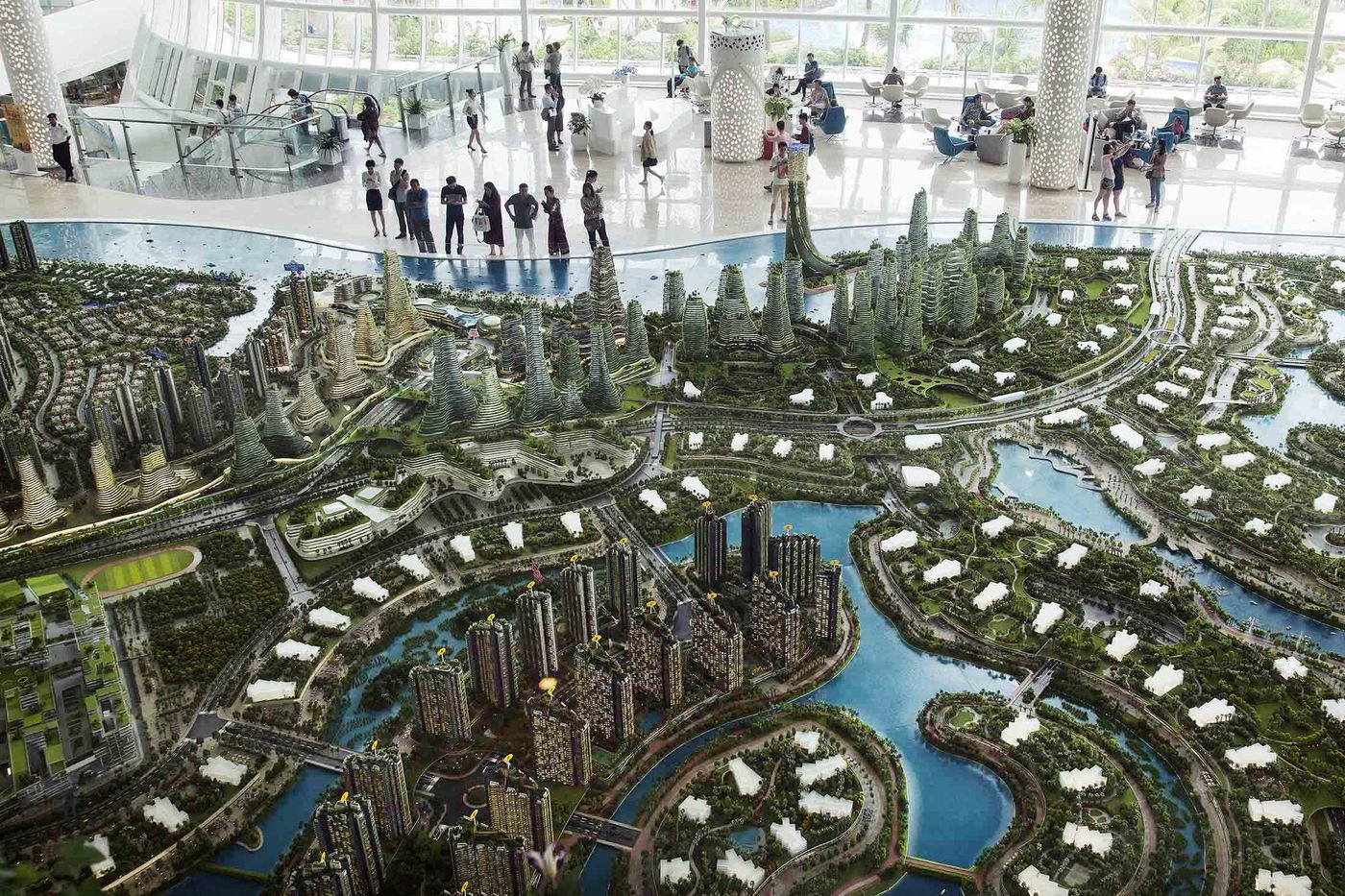
Country Garden's Forest City is a city in Malaysia for 700,000 people, being built on four artificial islands. All his office towers, hotels, shopping centers and schools will be buried in verdure.
"Cities of the Future" have ceased to be just projects on paper. Already, the appearance of megacities is rapidly changing under the influence of successes in the development of 3D printing, the Internet of things and composite materials. The appearance of the city is also affected by the transport system. More and more companies are beginning to experiment with passenger drone. Following the transport infrastructure, the city itself will change.
The city of the future is not only a “paradise on earth”, but also a new class of attendant problems. In modern progressive agglomerations, poverty and crime do not disappear. So how should a locality of tomorrow be to overcome healthy pessimism?
Evolving architecture

')
Moscow was included in the list of seven cities-applicants for the title of the most "smart" city on the planet (Toronto, Montreal, Eindhoven, Stockholm and Glasgow were recognized as winners of previous years). But even if the capital wins, the actual problems of the present will not disappear - traffic jams, at least.
Innopolis, located in Verkhneuslonsky district of the Republic of Tatarstan, can be considered a real place for the implementation of futuristic ideas in Russia.
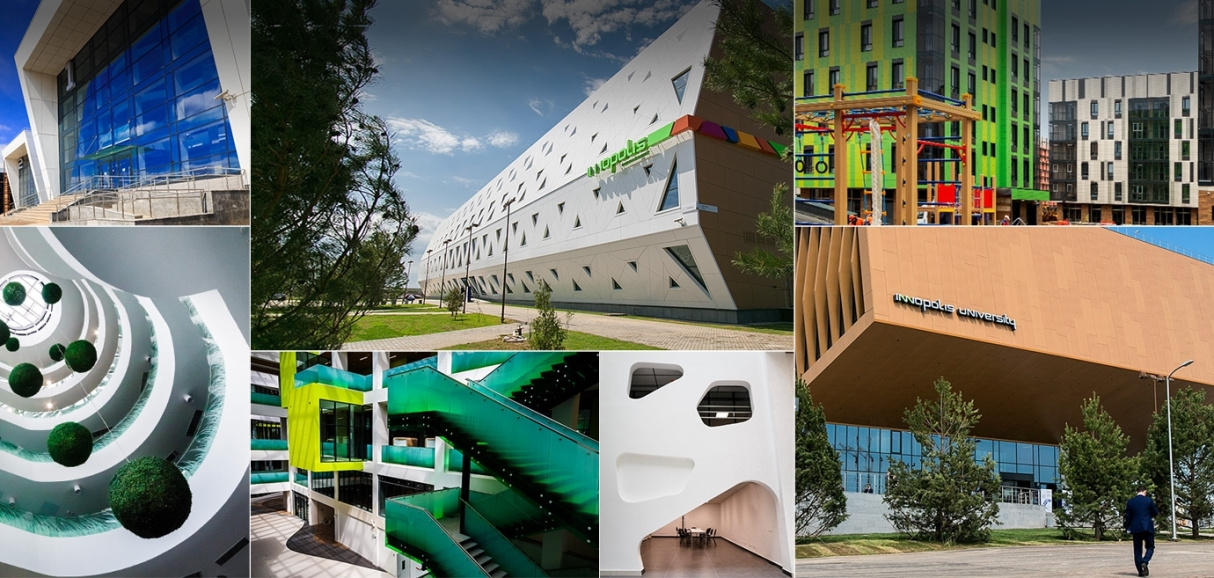
The architecture of Innopolis is pleasing to the eye, solves the problem of fatigue from the “urban jungle” type, removes some of the psychological stress of a city dweller. Residential complexes of Innopolis repeat the elements of nature - they are unique, diverse, they exclude the soulless copying of details. The buildings have bright green, white and wood color. Parking - only underground; municipal buildings imitate the natural landscape; on the territory of the electric buses ply.
Innopolis has one unconditional plus, because of which the embodiment of any ideas is possible - the population today does not exceed 3 thousand people. On such a scale, many problems do not exist at all. For example, transport. Unmanned cars are all good, but they take up as much space as regular ones. UAVs will not relieve the city of traffic jams - moreover, due to the availability of transport (you no longer need to be able to drive), there will be more cars.
You can not just build up parking lots - it is not profitable from the point of view of the economy. The city will flourish if it has large areas where people gather together.

“Oases” among office buildings for rest and communication are now being built in many cities of the world. The illustration shows the new Amazon office buildings in Seattle. Under the glass domes will be green gardens.
According to scientific research, social relationships - both quantitatively and qualitatively - affect mental and physical health, the level of risk of mortality. That is, the quality of social relationships has a short-term and long-term impact on health. Adults who have more social connections are healthier and live longer than their more isolated peers. Urban space is a part of social relations infrastructure that helps people communicate with each other.
Thus, spending on a city created for communication, you can at once improve public health indicators. Technologies allow not to isolate people from each other, but to give them more opportunities for communication.
Great transport problem

The Dubai Road and Transport Authority announced in early 2017 that the operation of flying UAVs for individual transport will begin this year. A prototype of a new type of passenger transport can transport one person weighing up to 100 kg in 30 minutes over a distance of 50 km, traveling at a speed of up to 160 km / hour. The passenger simply selects a destination using the touch screen, sits in the capsule and flies.
It is planned that by 2030, 25% of transport traffic in Dubai will be "smart" and unmanned. However, in other cities, problems are still being solved in other ways.
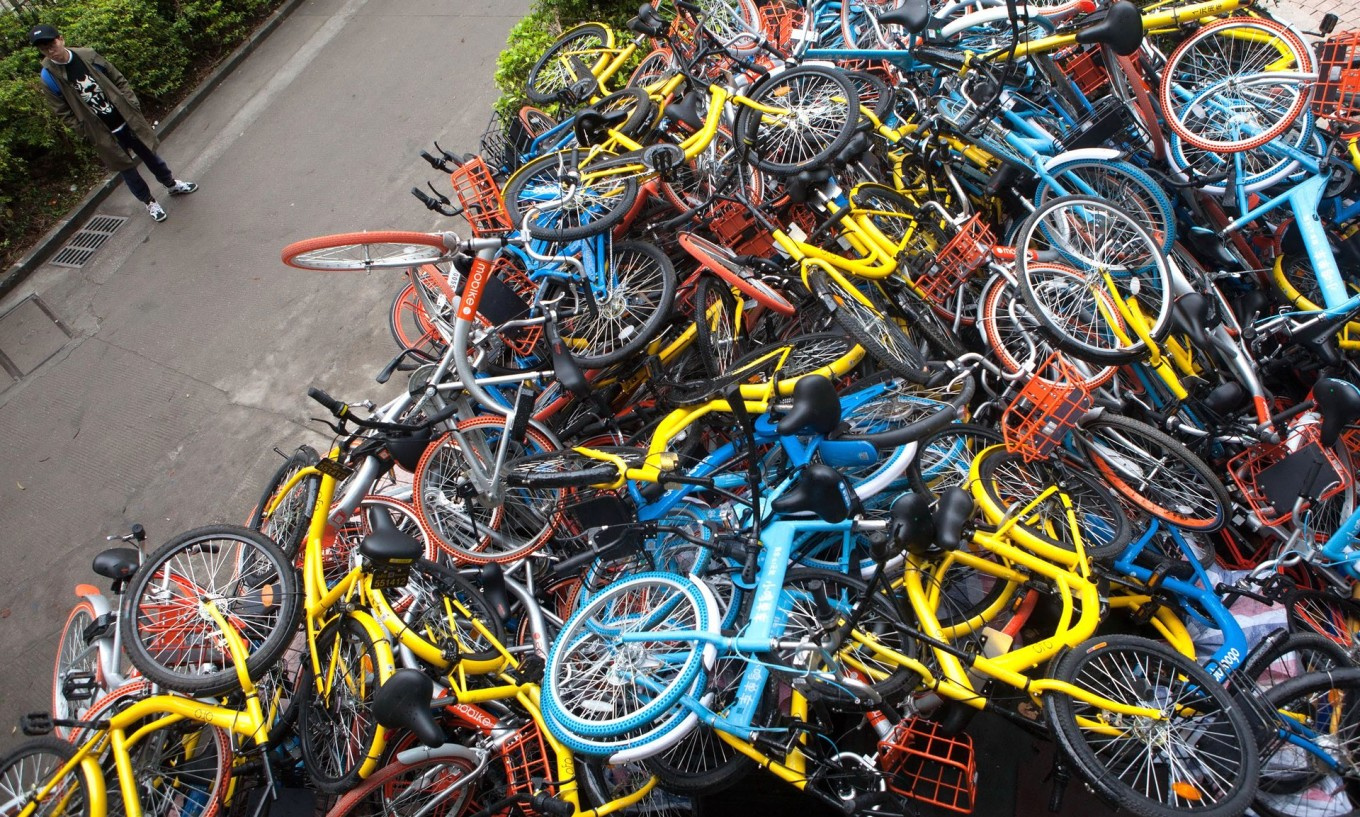
Even environmentally friendly transport does not save the city from difficulties. The more eco-transport becomes, the more acute the parking problem. In Hangzhou (China), bikes were simply thrown around the city - this is a problem popular with car sharing models (the application removes the lock from the bike and then the bike can be left anywhere in the city). As a result, the entire city was littered with thousands of abandoned bicycles. Get rid of them, too, can not be - the city's population is increasing annually by 200,000 people. It is impossible to demolish old roads and build new ones because of the city center, which has historical value.
Hangzhou authorities are developing the metro, as well as increasing the number of municipal electric transport, buying three thousand buses and taxis. This did not solve the problem, because there are too many people at the moment.
If you go to the other end of the world, in the Swedish city of Malmo, which is already called the city of the future, you can see an example of the synergy of different approaches to the transport problem. 40% of residents use bicycles to move, and all public transport runs on biofuel, which is collected from the kitchens of city residents. In Malmo, bicycles are not abandoned, but left in special parking lots. Dozens of intersections are equipped with a special sensor system that gives bikes an advantage on the roads. Many trains and ferries have compartments for transporting bicycles.
Real city of the future

Malmo is a Swedish Detroit, a dying industrial city, all of whose greatness remains in the distant past. But now Malmo, previously considered the territory with the highest unemployment rate in Sweden, has turned into a thriving eco-reserve for the creative class.
Desperate times require desperate measures - the city independently took up the restructuring and renovation. Old industrial shipyards were demolished; instead of them, 600 houses, shops and office buildings equipped with solar panels and wind turbines were built from ecological materials. A new city block was connected to a water recycling system, in which water is first used for heating in winter and then for air conditioning in summer.
In each kitchen of the new house Malmo installed waste shredders. The resulting material is sorted into several dozen categories - it is sent for processing into biofuel for cars and urban transport, is used to cover parking lots and roads.

Malmö is one of the greenest cities on the planet, and all of these greens are not just concentrated in parks, but also located in botanical gardens open to the citizens. In addition, on those roofs where solar panels are not installed, mini-squares are smashed and supplied with rainwater harvesting systems.
In the most advanced area of the city ( Hallbarkheten ) inside their apartments, tenants can control the level of electricity consumption depending on the time of day and their needs. The temperature in the apartments is controlled by thermostats. The level of illumination in the rooms is automatically adjusted - the parameters vary depending on the purpose of the room, time of day and season.
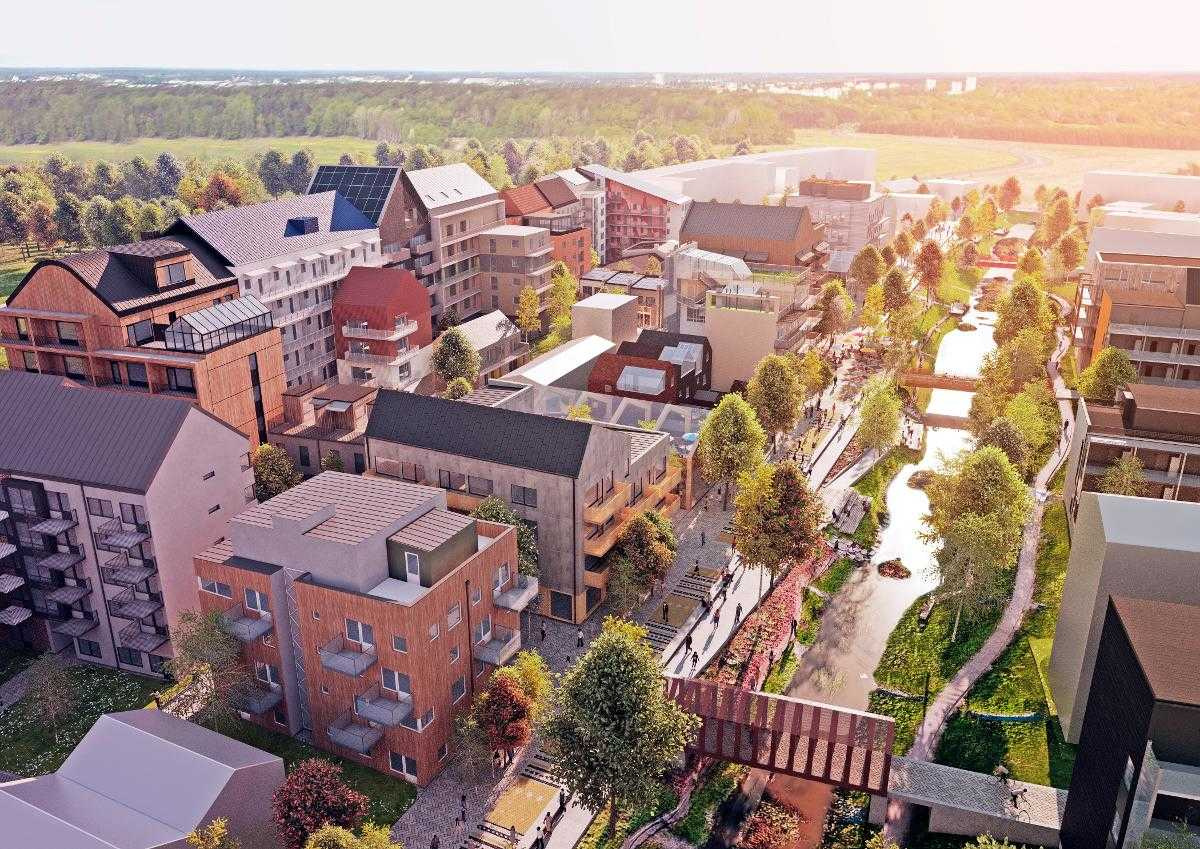
By 2030, the city plans to fully switch to alternative renewable energy sources. Malmo is not included in the tops of the most advanced cities in the world, but if you pay attention to the practicality of the various ratings, many questions will arise.
Questions to Bangalore and Singapore's answer
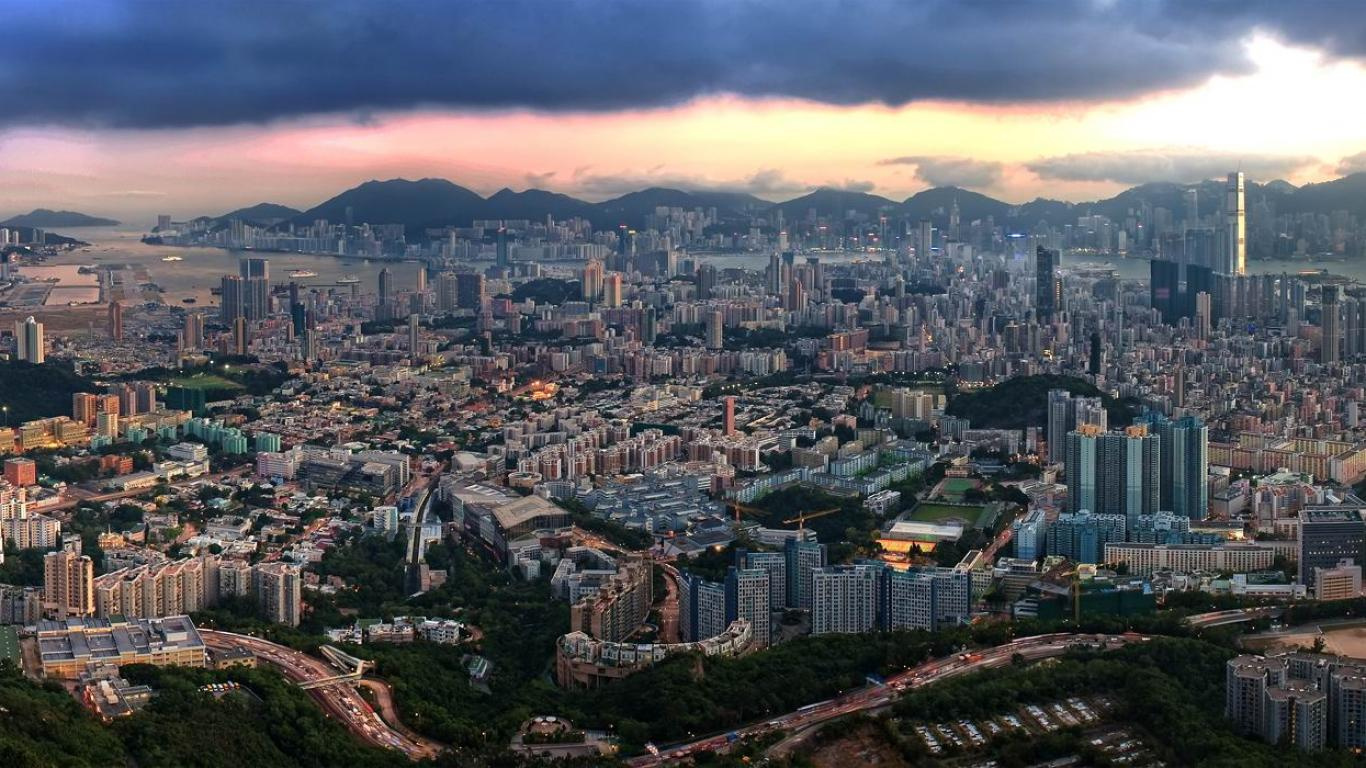
Consulting agency Jones Lang LaSalle ranked the top thirty most dynamically developing cities and metropolitan areas of the world, of which more than half are located in the Asia-Pacific region. Silicon Valley ranks only third in the list, but Bangalore is the first.
This city is the fifth largest in India. Bangalore is considered the scientific center of the whole country - a huge number of different IT companies are concentrated in it. Bangalore is a huge IT city where hundreds of thousands of programmers come. American, Canadian and Asian companies have opened their offices and call centers here.
Is the city perfect for living? Not. The traffic on the roads is very lively and chaotic, the journey from home to the office takes a lot of time, the city practically does not use "green" technology.
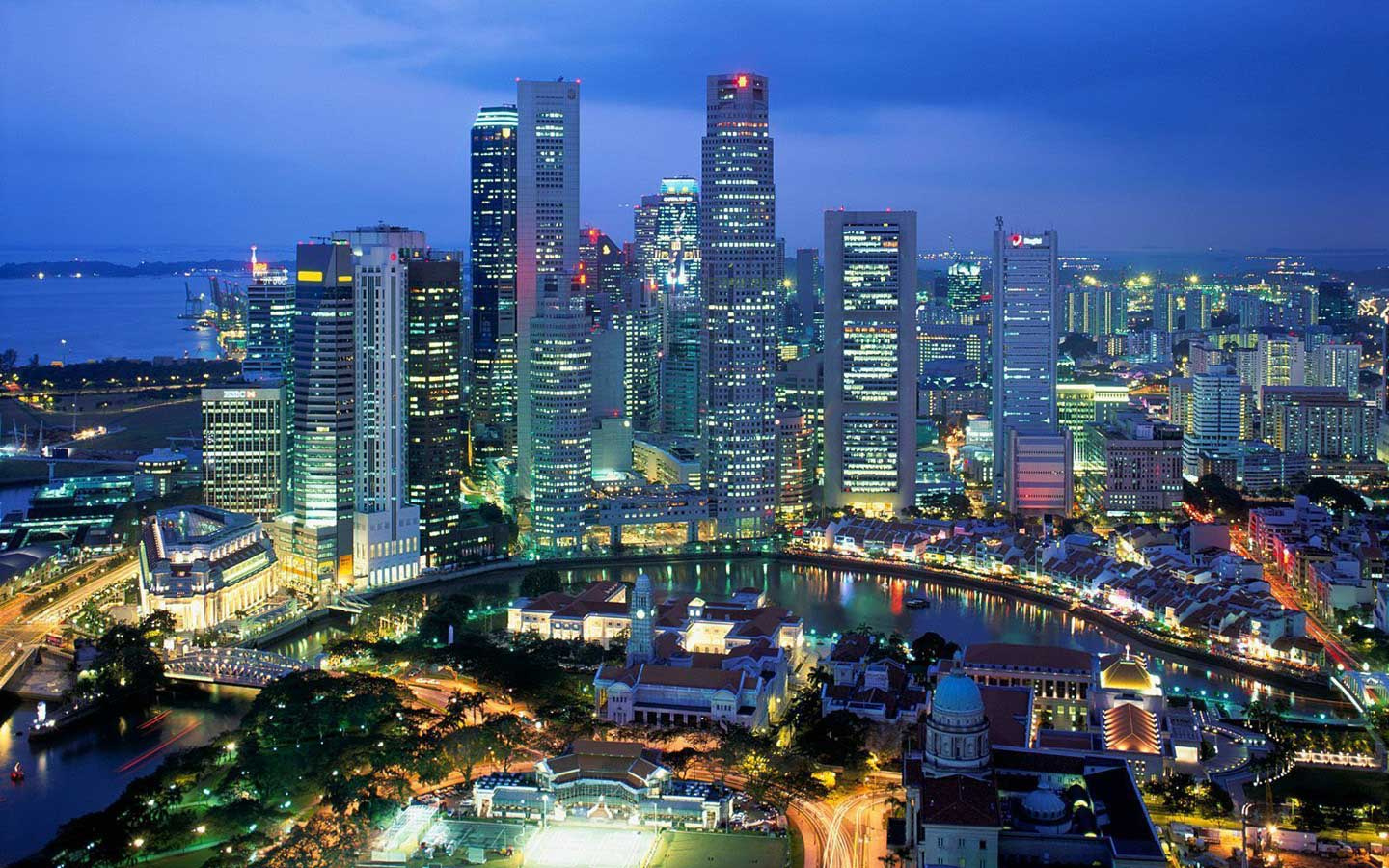
But there is an exception to the rule. Singapore has been honored with numerous awards supporting the status of the city of the future. A few years ago, we launched the Smart Nation project, which is preparing Singapore for the future. According to the plan, the city will become a testing ground for testing technological solutions to all sorts of urban problems. One of the main tasks is to simplify the life of citizens with a high population density.
Solar panels and vacuum waste disposal systems appeared. Several areas of the city equipped with sensors that monitor the consumption of electricity and water. All data from the sensors will be centrally collected and analyzed to obtain the most complete information about the city.
Caring for people is shown not only in ordinary things - the authorities have also established a system for monitoring single elderly citizens, based on motion sensors. If an elderly person does not move for a long time, the system automatically alerts the family and health workers. Another medical innovation is telemedicine, in which patients are treated (most often it is a recovery period) at home, under the supervision of a physician (via telepresence systems).
"Dead" city of the future

In the state of New Mexico, they want to build a city of CITE (Center for Innovation, Testing and Evaluation) for 35 thousand people, in which no one will live. Telecommunications firm Pegasus Global Holdings intends to invest $ 1 billion in its creation. In order to receive profits from the project, Pegasus plans to lease buildings and provide services that will help customers test, develop and find commercial use of experimental technologies.
The CITE project is a full-scale model of a typical American city that will be used as a Petri dish to develop new technologies that determine the future of the urban environment. Corporations, universities and the federal government will use the facility to test new technologies in the field of clean energy, security and autonomous vehicles on a large scale, but without inconvenience or even threats to the millions of people who live in real cities.
On 33 square miles will be research in the field of transport, construction, communications and security. CITE will include specialized areas for the development of new forms of farming, energy and water treatment. Unmanned vehicles will drive on special roads and be controlled from above by drones.

CITE should be an “intermediate step” between laboratory testing of technology and its entry into the market. The project allows you to test not only the infrastructure, but also the new city of the future.
CITE is planning to build by 2018, although since the spring of 2016 the official website has not been suspiciously updated, but let's hope for the best. In any case, CITE is much closer to reality than the thousands of concepts of futuristic cities.
Masdar who survived the crisis

Masdar in the UAE has long been considered one of the most promising futuristic projects. Although photos of Masdar rather indicate the construction of a new “ghost town”, there are still people in it. The good news is that since 2015, the city makes a profit and in two or three years will return the funds invested in it to the state.
At the time of construction completion (it has been going on since 2008), 40,000 people will live here, and another 50,000 will come to work from Abu Dhabi nearby every day, using the fast public transport system (however, you can drive around the city , but only if it is an electric car).
Builders Masdara seek to minimize carbon emissions, reducing them by half compared with other cities. Houses are built from eco-materials, and the costs of water and energy in them are carefully calculated. Narrow (3 meters wide) and short streets do not allow the sun to heat the asphalt pavement on the footpaths, however there are also two-lane streets in the city for electric vehicles and bicycle transport.
Originally it was planned to completely abandon private cars, but the development of car sharing and mass production of environmentally friendly electric cars changed the plans of the architects.

A careful approach slows down the pace of construction - at the moment 7% of the territory is ready, but by 2020 they promise to rebuild 35-40%, and by 2030 - to complete the construction.
The infrastructure of the city includes many minor improvements. For example, instead of the usual Wi-Fi-points, Li-Fi is used here - the technology of data transmission through LED lamps of street lamps, which allows not to lose the channel width with an increase in the number of subscribers.

In addition, the city has a 45-meter wind tower, a photovoltaic complex on 22 hectares, a cold supply factory with wells 2.5 km deep, and much more .
However, Masdar is not the most ambitious project of the country. In 2017, Emir of Dubai, the Prime Minister and Vice President of the United Arab Emirates, Sheikh Mohammed ibn Rashid Al Maktoum, announced that in 2117 it is planned to build a city on Mars the size of Chicago and a population of up to 600,000 people.
The first steps in this direction will be made in a few years - the UAE Space Agency will send the “Hope” spacecraft to Mars in 2021. The main goal of the mission is to study the atmosphere in low orbit at different latitudes. Hope will also study how a Martian atmosphere leaks into space.
Computer City

In Portugal, they wanted to build the PlanIT Valley smart city, almost all elements of which (from traffic lights to tap water temperatures) would be managed using a single operating system that collects 5 petabytes of information per day from more than 100 million connected sensors.
A single information system was supposed to connect not only sensors in the “smart home - smart city” format, but to unite an unlimited number of smartphones, tablets, computers, roads and buildings in a single communication space.
The construction needed 20 billion euros, which was never found, but the concept turned out to be so attractive that it survived and spread to other cities - now PlanIT elements are being implemented in different parts of the world. There is no doubt that sooner or later all the elements are realized in one place.
The PlanIT Valley single control center will know everything about temperature, lighting, humidity, traffic, heating and water supply throughout the city. This will allow you to instantly respond to any abnormal situations. It will be possible to optimize the use of resources and manage the city in real time.
PlanIT Valley is similar to a game simulator, where instead of one player there are hundreds of qualified specialists who monitor the condition of the city infrastructure around the clock. The residents themselves will be able to manage the city with the help of Place Apps - it will be possible, for example, to turn on the lantern on their street through a mobile application.
Problems and other projects
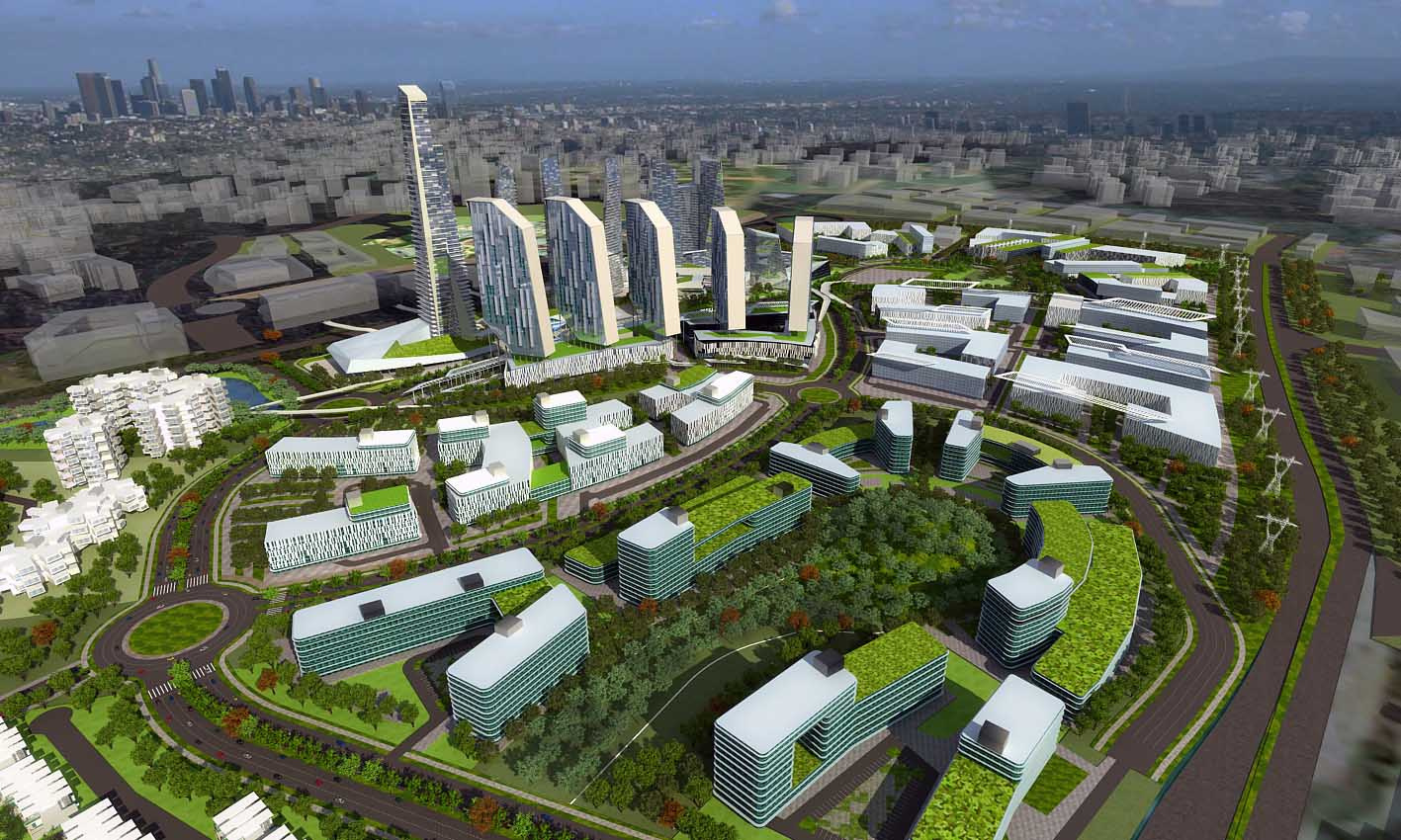
In China alone, thousands of new homes are being built right now. The whole world is known for the smart city of Iskander in Malaysia. In South Korea, build a dream city of Songdo . Even Skolkovo can become an energy efficient, innovative city. Against this background, I somehow do not want to think that there will be any difficulties in the cities of the future.
Overpopulation is one of the main problems of the urban world. When only 100-story skyscrapers remain around, the trees will have to make room, and people will have to reduce their living space. Incubators of cutting-edge design do not answer the question of where to store millions of electric vehicles.
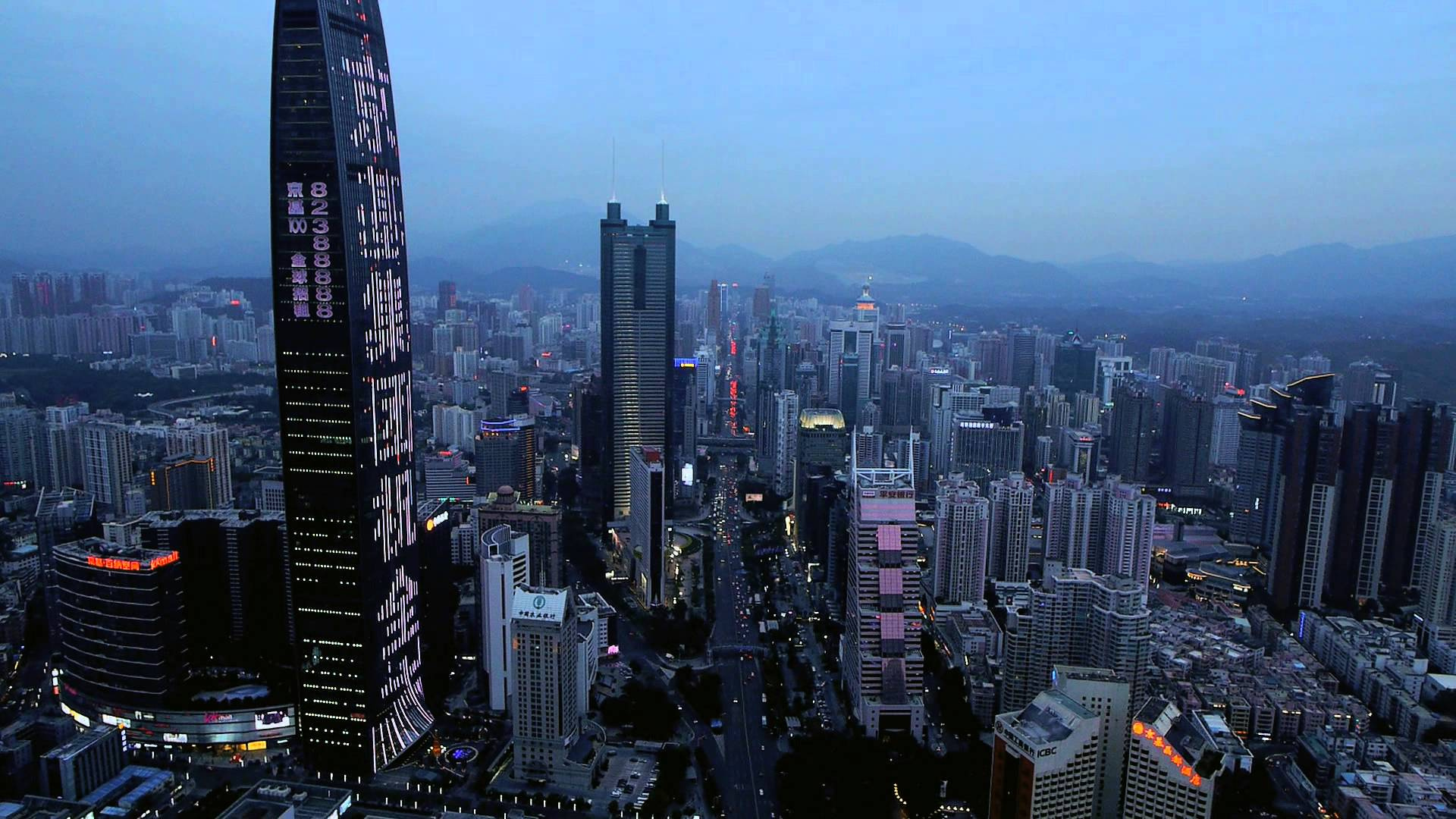
In 1979, Shenzhen was just a quiet fishing village in which 30,000 people lived. Today, the population of the city is more than 11 million people, due to the influx of workers from the countryside. Cities beckon people. It is possible that in the future there will not even remain countries - there will be only cities stretching for hundreds and thousands of kilometers.
On the other hand, so far we have only come to solving the most obvious problems. No one builds a city at once in a million inhabitants. If you manage to solve all the problems for thousands of people, then the project will be mashtabated. And there and to the future at hand.
Source: https://habr.com/ru/post/370619/
All Articles